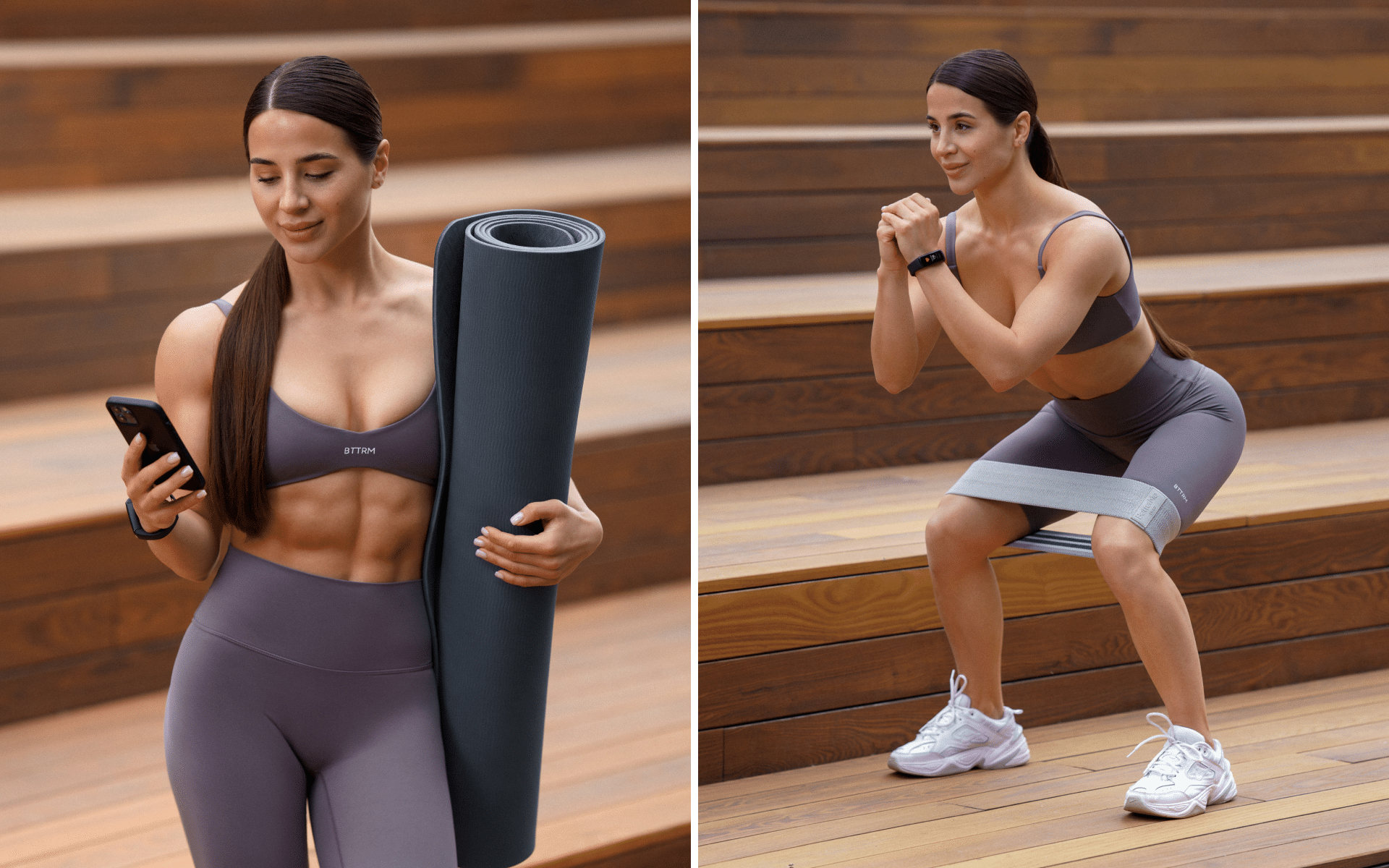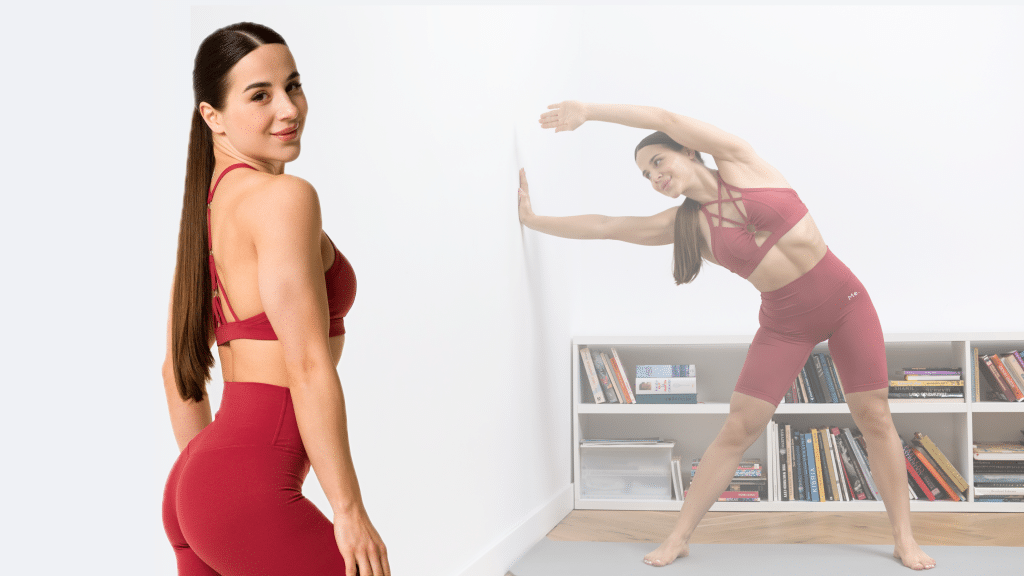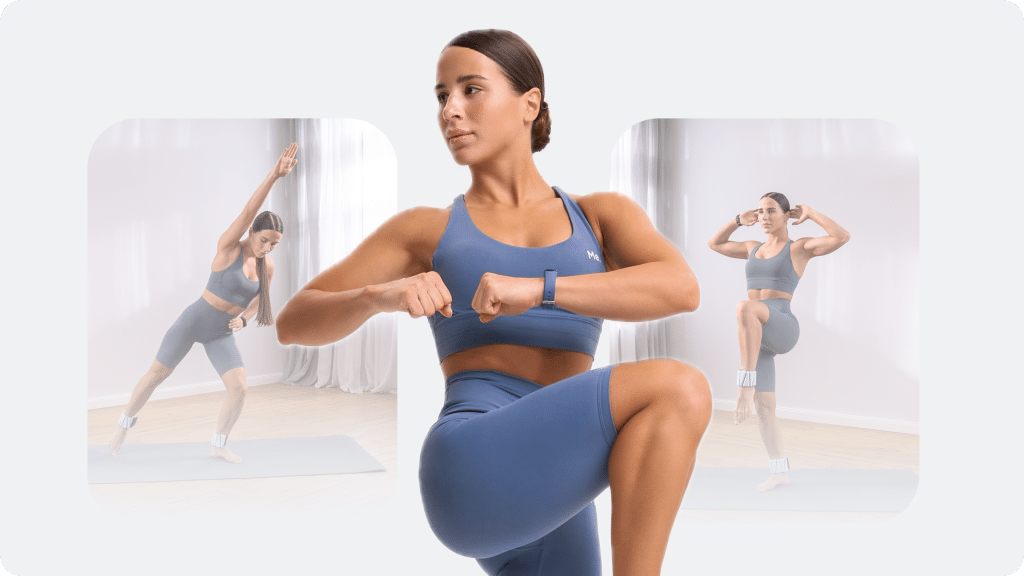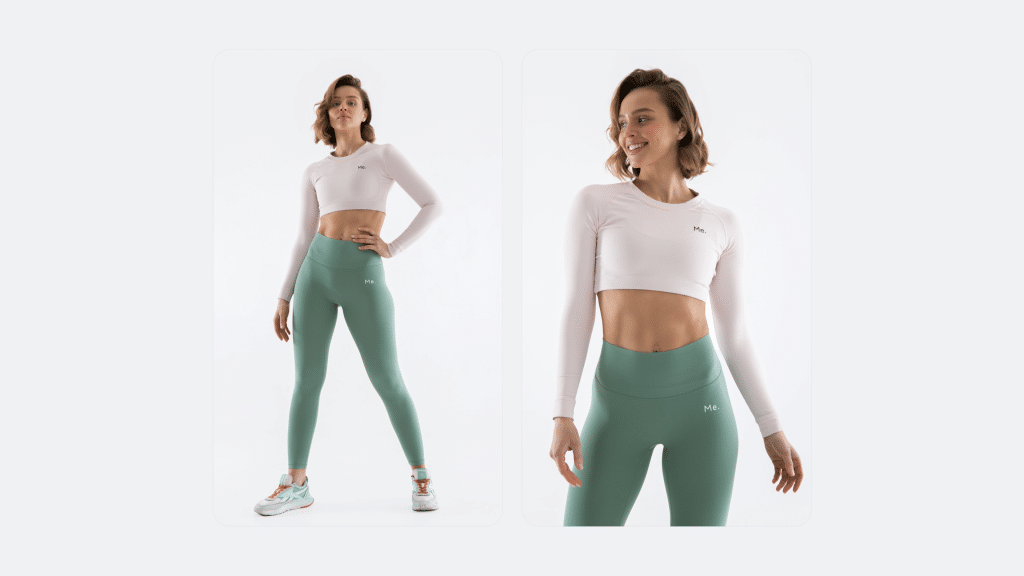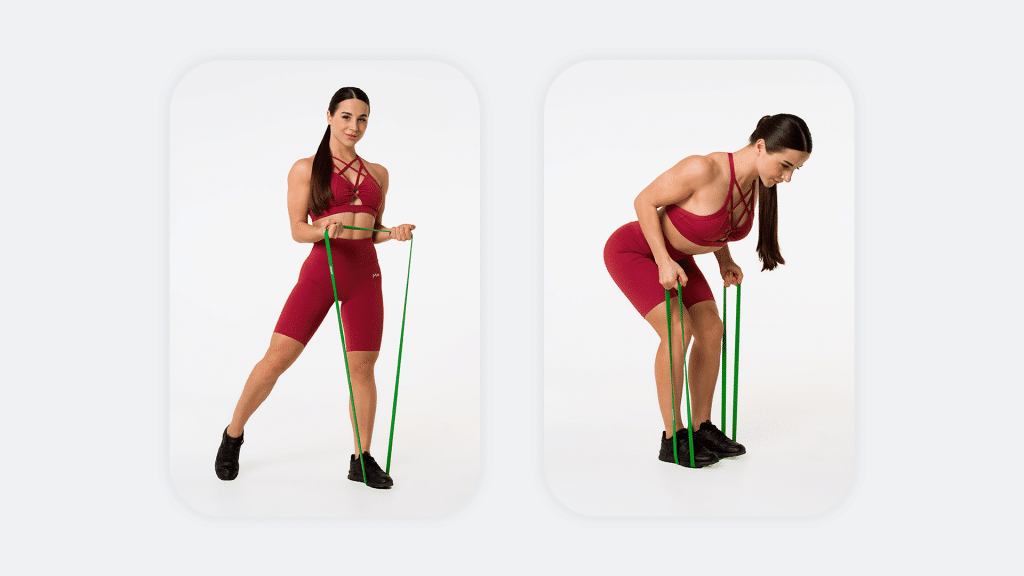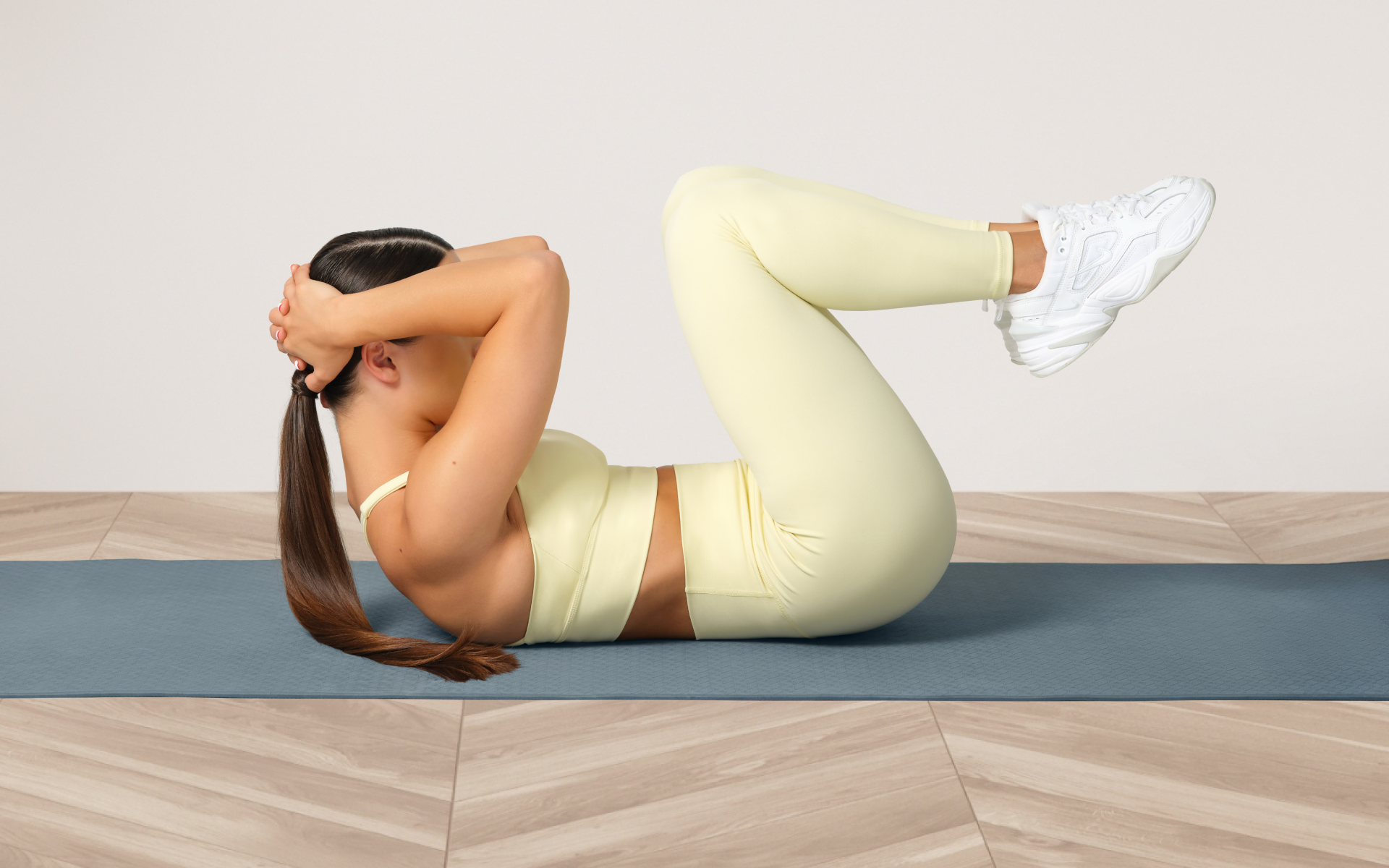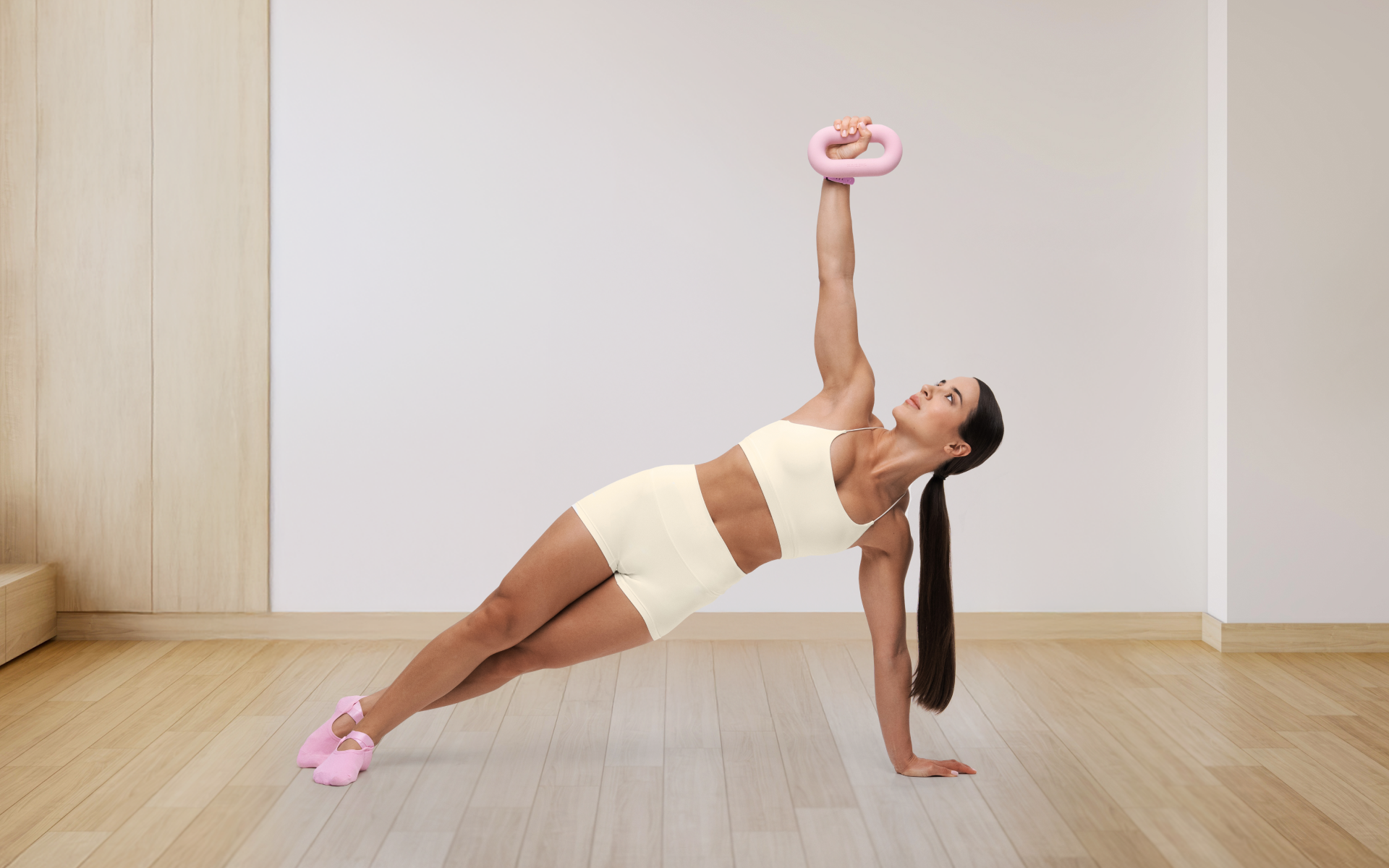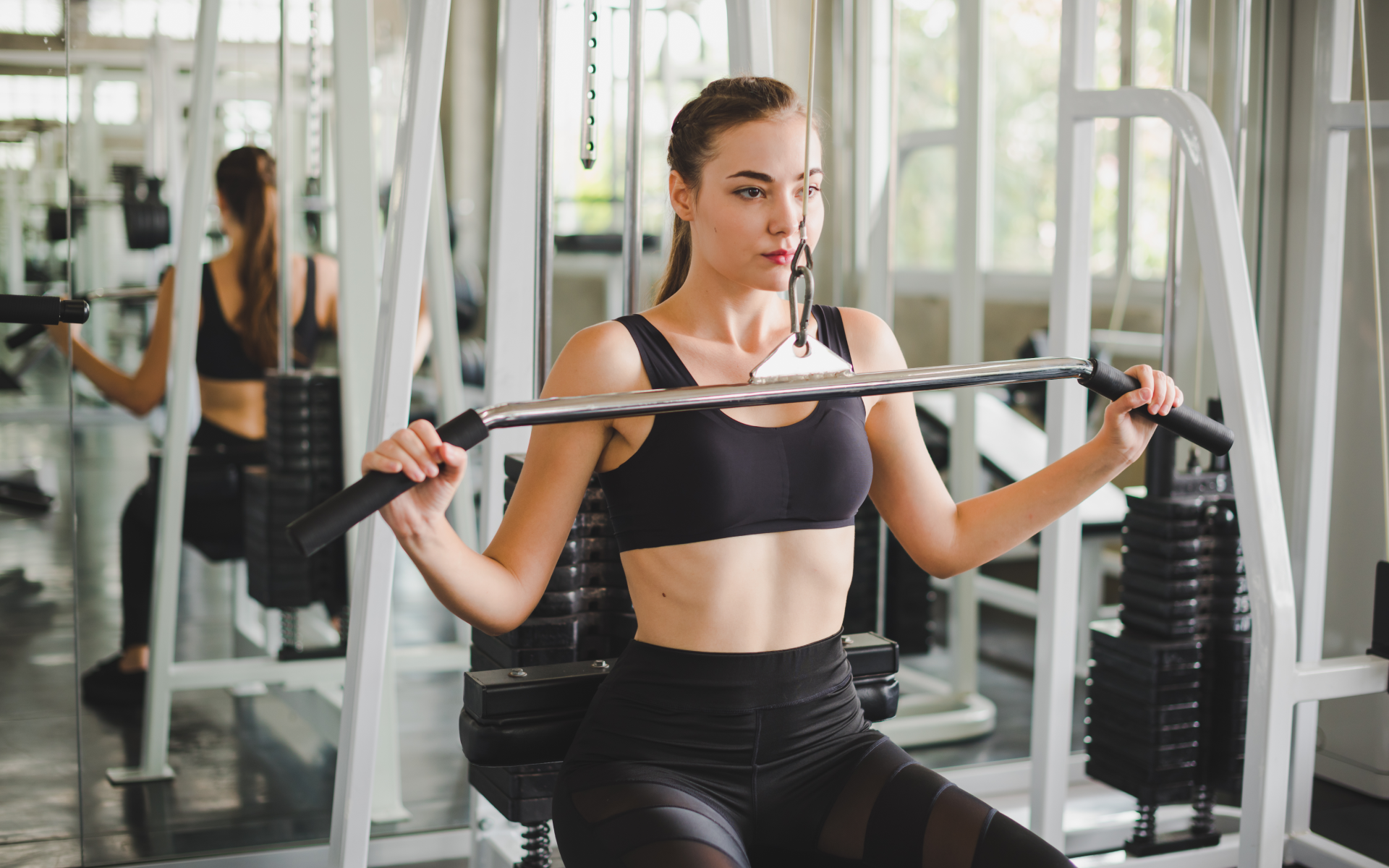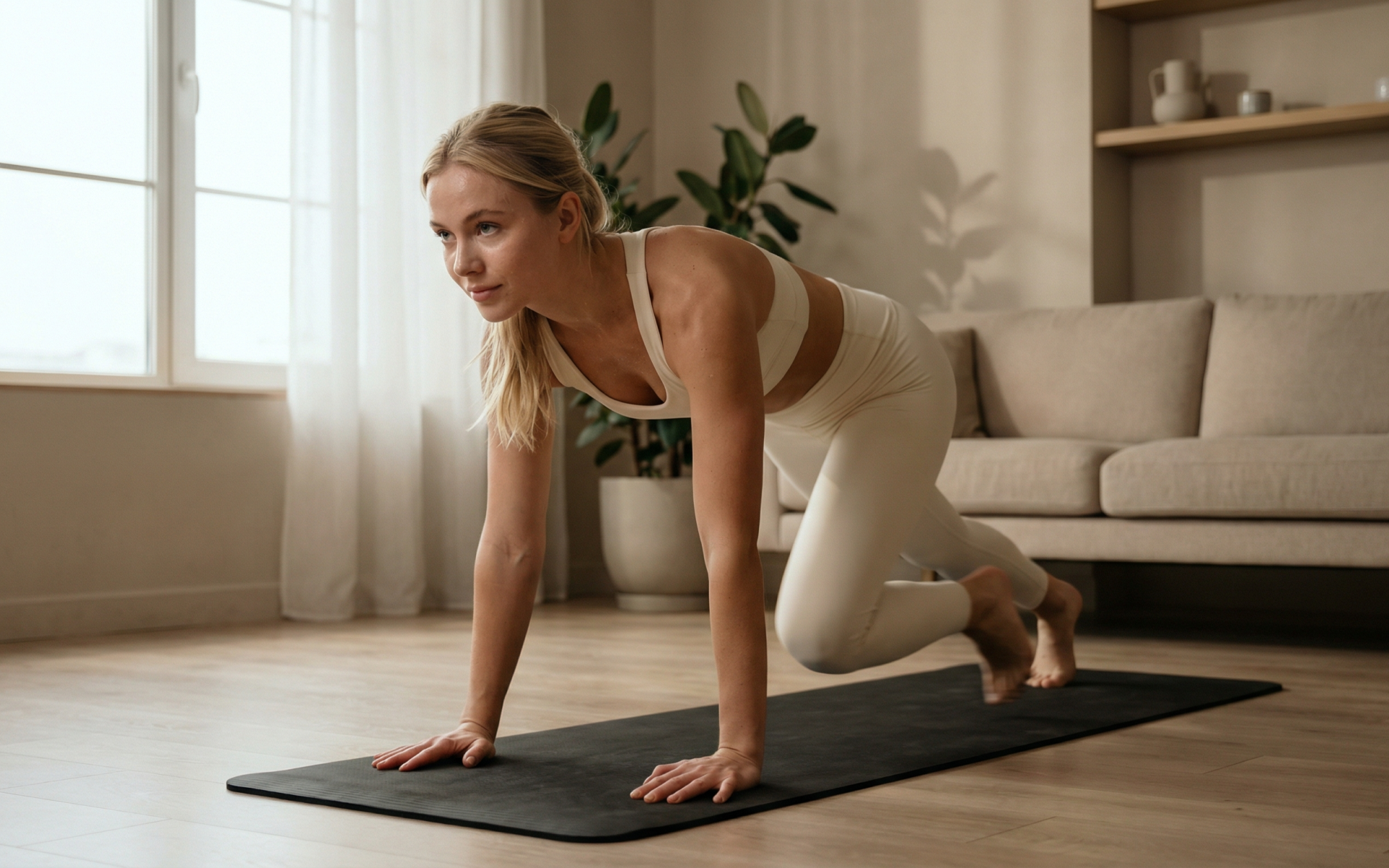Strength training is essential for building muscle mass, increasing bone density, and improving overall fitness (1). According to the American College of Sports Medicine, you should do this type of exercise at least twice a week (2).
However, with so many different exercise routines out there, it can be overwhelming to figure out where to start.
One way to get started on your journey toward a stronger and healthier body is by mastering the foundational movements. These are seven basic exercises that target multiple muscle groups and are fundamental to most strength training programs.
By mastering these movements, you’ll build functional strength and reduce the risk of injury during daily activities.
In this guide, we’ll take a look at some of the basic full-body exercises that should be included in any workout routine. These movements are suitable for all fitness levels and can be modified to fit your individual needs.
What Is a Basic Full-Body Workout?
A basic full-body workout is a strength training routine that targets all major muscle groups in the body. This includes the upper body, lower body, and core muscles. By working out each of these areas in one session, you can improve overall strength and balance throughout your entire body.
It has several advantages over other training splits (such as upper/lower or push/pull/legs) including (3):
- Time efficiency: By targeting all major muscle groups in one session, you can get a full-body workout in less time.
- Balanced development: Focusing on both upper- and lower-body exercises ensures all muscle groups are trained equally.
- Convenience: With a basic full-body workout, you only need to go to the gym two or three times a week instead of splitting your workouts into multiple days.
- Suitable for beginners: This type of workout is a great starting point for those who are new to strength training as it introduces them to the foundational movements.
Below, we’ll go through each of the seven basic full-body exercises and provide tips on how to perform them correctly.
What Is the Best Full-Body Workout Routine?
The best full-body workout routine is tailored to your fitness level (beginner, intermediate, or advanced) so that it challenges your muscles without overexerting them. It’s important to gradually increase the intensity of your workouts as you get stronger, so don’t be afraid to modify the exercises or add weights when necessary.
In addition, your routine should include a warm-up and cool-down period to prevent injury and promote recovery.
If you wish to free yourself from all the extra pounds that have been weighing you down for way too long, start using the BetterMe: Health Coaching app and overhaul your entire life!
A good warm-up should consist of dynamic movements that activate the major muscle groups you’ll be using during your workout. A cool-down can involve stretches for each muscle group to help with flexibility and reduce muscle soreness (4).
It’s a good idea for your workout to include these 7 basic full-body exercises:
| Exercise | Target Muscle Groups | Sets | Reps |
|---|---|---|---|
| Squats | Quadriceps, hamstrings, glutes | 3 | 10-12 |
| Deadlifts | Hamstrings, glutes, lower back | 3 | 8-10 |
| Push-ups | Chest, shoulders, triceps | 3 | 8-12 |
| Pull-ups | Back, shoulders, biceps | 3 | 6-8 |
| Lunges | Legs, balance, stability | 3 | 10-12 for each leg |
| Bench press | Chest, shoulders, triceps | 3 | 8-10 |
| Plank | Core, stability | 3 | 30 sec - 1 min |
1. Squats
Squats are a compound exercise that primarily targets the quadriceps, hamstrings, and glutes. This exercise can be performed with just your body weight or with added weights such as dumbbells or a barbell.
To perform a squat:
- Stand with your feet shoulder-width apart.
- Engage your core and keep your chest up.
- Push your hips back as if sitting in a chair, while keeping your weight on the heels of your feet.
- Lower yourself until your thighs are parallel to the ground, making sure to keep your knees behind your toes.
- Push through your heels to stand back up into the starting position.
Repeat for 3 sets of 10-12 reps.
2. Deadlifts
Deadlifts work multiple muscle groups, including the hamstrings, glutes, and lower back. It’s important to maintain proper form and avoid rounding your back during this exercise.
To perform a deadlift:
- Stand with your feet shoulder-width apart and your toes pointing slightly out.
- Hold a barbell in front of you with an overhand grip, your hands slightly wider than shoulder-width apart.
- Engage your core and keep your chest up.
- Push your hips back while bending your knees slightly.
- Lower the barbell down toward the ground, keeping it close to your body and making sure to keep your back straight.
- Push through your heels to stand back up into the starting position.
Repeat for 3 sets of 8-10 reps.
3. Push-Ups
Push-ups are a great compound exercise for the upper body, targeting the chest, shoulders, and triceps. They can be modified to fit any fitness level.
To perform a push-up:
- Start in a high plank position with your hands shoulder-width apart.
- Engage your core and keep your body in a straight line.
- Lower yourself toward the ground, keeping your elbows close to your sides.
- Push through your palms to lift yourself back up into the starting position.
Repeat for 3 sets of 8-12 reps.
4. Pull-Ups
Pull-ups are one of the best exercises for building upper-body strength and targeting multiple muscle groups, including the back, shoulders, and biceps.
To perform a pull-up:
- Hang from a pull-up bar with your hands shoulder-width apart, palms facing away from you.
- Engage your core and keep your body still as you pull yourself up toward the bar.
- Once your chin is above the bar, slowly lower yourself back down to the starting position.
Repeat for 3 sets of 6-8 reps.
Read more: Is a Calisthenics Everyday Split the Best Way to Build Muscle?
5. Lunges
Lunges are a great exercise for targeting the legs and improving balance and stability.
To perform a lunge:
- Stand with your feet hip-width apart.
- Step forward with one leg and lower yourself until both knees are bent at a 90-degree angle.
- Push through your front heel to stand back up into the starting position.
- Repeat on the other leg and continue alternating for 3 sets of 10-12 reps on each side.
6. Bench Press
The bench press is another compound exercise that targets the chest, shoulders, and triceps.
To perform a bench press:
- Lie down on a flat bench with your feet firmly planted on the ground.
- Hold the barbell with an overhand grip slightly wider than shoulder-width apart, arms fully extended above your chest.
- Lower the bar toward your chest while keeping your elbows close to your sides.
- Push the bar back up to the starting position, making sure not to lock out your elbows.
Repeat for 3 sets of 8-10 reps.
7. Plank
Planks are a great exercise for strengthening the core and improving overall stability.
To perform a plank:
- Start in a high plank position with your hands shoulder-width apart.
- Engage your core and keep your body in a straight line from head to heels.
- Hold this position for 30 seconds to 1 minute, or as long as you can maintain proper form.
- Remember to breathe throughout this exercise. Focus on breathing in through your chest and out through your stomach. Each breath out should brace your stomach even further.
Repeat for 3 sets with short breaks in between each set.
Is a Full-Body Workout Good for Beginners?
Full body workouts are great for beginners as they target all major muscle groups in a single session, which helps build a balanced foundation of strength and fitness. They are efficient, often require less time than split routines, and can be easily adjusted in terms of intensity and complexity as you progress. They can also help improve overall coordination and endurance.
Are 4 Exercises Enough for a Full-Body Workout?
Four exercises can be enough for a full-body workout, but it depends on the exercises chosen and how they are structured. Here’s why:
Pros:
- Efficiency: Focusing on compound exercises that target multiple muscle groups can provide a comprehensive workout in less time.
- Simplicity: A shorter list of exercises can be easier to manage, especially for beginners or those with limited time.
- Focus on Form: With fewer exercises, you can concentrate on perfecting your form and technique, which reduces the risk of injury.
Cons:
- Limited Muscle Engagement: With only four exercises, you may miss out on targeting some smaller muscle groups or specific areas.
- Plateau Risk: Over time, doing the same limited set of exercises can lead to plateaus in progress (5).
- Lack of Variety: A limited routine might become monotonous, which can affect motivation and adherence.
To make a four-exercise routine effective, you should choose exercises that cover all major muscle groups, such as squats, deadlifts, push-ups, and pull-ups. Adjust the intensity and incorporate variations to keep challenging your body.
The BetterMe: Health Coaching app will provide you with a host of fat-frying fitness routines that’ll scare the extra pounds away and turn your body into a masterpiece! Get your life moving in the right direction with BetterMe!
Is 30 Minutes of a Full-Body Workout Enough?
30 minutes of a full-body workout can be enough, depending on how the workout is structured and the intensity of the exercises. How consistent you are with your workouts also plays a role in seeing results.
Several studies and fitness experts suggest that a 30-minute workout can be effective if appropriately structured (6). The key is to maximize the workout intensity and focus on compound exercises that engage multiple muscle groups simultaneously.
High-intensity interval training (HIIT) has gained popularity for this reason, as it efficiently burns calories and enhances cardiovascular fitness within a short timeframe (7).
Research published in the Journal of Obesity highlighted that HIIT sessions lasting just 20-30 minutes can improve body composition and increase aerobic capacity (8).
In addition, the American Heart Association recommends at least 150 minutes of moderate aerobic activity or 75 minutes of vigorous activity per week, which can be achieved through regular 30-minute sessions (9).
Consistency, progression, and a balanced approach ensure that a half-hour workout remains effective over time, enabling individuals to reap the benefits of improved strength, endurance, and mental health.
Read more: Pilates Workout Routine: Optimizing Your Workouts for Long-Lasting Results
What Is the 4-2-1 Workout Plan?
The 4-2-1 workout plan is a weekly exercise routine that includes:
- 4 days of strength training: Focused on building muscle and improving overall strength.
- 2 days of cardio: Aimed at enhancing cardiovascular fitness and burning calories.
- 1 day of mobility or active rest: Dedicated to improving flexibility, balance, and recovery.
This plan provides a balanced approach to fitness, ensuring that you work on strength, endurance, and flexibility throughout the week.
To gym 7 days a week effectively, it’s important to incorporate variety and balance to avoid overtraining and injury. Here’s a structured approach: 10 exercises in a full-body workout can be excessive, particularly for beginners, as it may lead to fatigue and reduced effectiveness. However, if structured well, it can be feasible: Yes, it’s perfectly fine to only do full-body workouts. They are efficient and effective, particularly for those with limited time: Training your full body every day is generally not recommended, as it doesn’t allow sufficient time for muscle recovery:Frequently Asked Questions
How to gym 7 days a week?
Is 10 exercises too much for a full-body workout?
Is it OK to only do full-body workouts?
Is it okay to train the full body every day?
The Bottom Line
A basic full-body workout routine is a great way to get started with strength training and can provide numerous benefits for both beginners and advanced individuals. It’s time-efficient, targets multiple muscle groups, and can be modified to fit any fitness level. Remember to always use proper form, gradually increase the intensity of your workouts, and give yourself enough rest and recovery between sessions.
DISCLAIMER:
This article is intended for general informational purposes only and does not serve to address individual circumstances. It is not a substitute for professional advice or help and should not be relied on for making any kind of decision-making. Any action taken as a direct or indirect result of the information in this article is entirely at your own risk and is your sole responsibility.
BetterMe, its content staff, and its medical advisors accept no responsibility for inaccuracies, errors, misstatements, inconsistencies, or omissions and specifically disclaim any liability, loss or risk, personal, professional or otherwise, which may be incurred as a consequence, directly or indirectly, of the use and/or application of any content.
You should always seek the advice of your physician or other qualified health provider with any questions you may have regarding a medical condition or your specific situation. Never disregard professional medical advice or delay seeking it because of BetterMe content. If you suspect or think you may have a medical emergency, call your doctor.
SOURCES:
- Strength training: Get stronger, leaner, healthier (2023, mayoclinic.org)
- Physical Activity Guidelines (n.d., acsm.org)
- 10 Benefits of Full-Body Workouts for Explosiveness (n.d., americansportandfitness.com)
- Warm Up, Cool Down (2024, heart.org)
- A Subject-Tailored Variability-Based Platform for Overcoming the Plateau Effect in Sports Training: A Narrative Review (2022, pmc.ncbi.nlm.nih.gov)
- 10‐20‐30 exercise training improves fitness and health (2024, ncbi.nlm.nih.gov)
- Evidence-Based Effects of High-Intensity Interval Training on Exercise Capacity and Health: A Review with Historical Perspective (2021, ncbi.nlm.nih.gov)
- The Effect of High-Intensity Intermittent Exercise on Body Composition of Overweight Young Males (2018, ncbi.nlm.nih.gov)
- American Heart Association Recommendations for Physical Activity in Adults and Kids (2024, heart.org)
- Active Recovery Workouts: What to Do on Your Rest Day (n.d., blog.nasm.org 10
- Exploring the Science of Muscle Recovery (n.d., blog.nasm.org)
- Overtraining Syndrome as a Complex Systems Phenomenon (2022, frontiersin.org)
